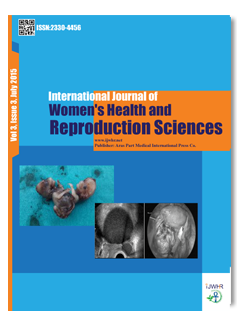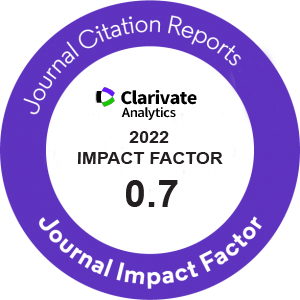| Original Article | |
| Post-dural Puncture Headache in the Obstetric Patient: Needle Size, Number of Dural Puncture and Timing of Ambulation | |
| Sousan Rasooli1, Farnaz Moslemi1, Ali Baybordi2 | |
| 1Department of Anesthesiology, Women?s Reproductive Health Research Center, Alzahra Teaching Hospital, Tabriz University of Medical Sciences, Tabriz, Iran 2Department of Anesthesiology, Tabriz University of Medical Sciences, Tabriz, Iran |
|
|
IJWHR 2015; 3: 163?167 DOI: 10.15296/ijwhr.2015.34 Viewed : 3776 times Downloaded : 3428 times. Keywords : Caesarean, Spinal anesthesia, Post-dural puncture headache |
|
| Full Text(PDF) | Related Articles | |
| Abstract | |
Objectives: This prospective study compared the incidence of post-dural puncture headache (PDPH) in obstetric patients undergoing spinal anesthesia for caesarean section from April 2012 to April 2013 in one year. We also evaluated the relationship between needle size, number of dural punctures, timing of ambulation and PDPH after cesarean section. Materials and Methods: A total of 319 American Society of Anesthesiologists (ASA) I-II full term pregnant women, scheduled for caesarean section under spinal anesthesia from April 2012 to April 2013 were evaluated. Spinal anesthesia was performed with hyperbaric bupivacaine plus fentanyl 10 ?g, from L3-4 intervertebral space. We recorded the number of attempts for spinal anesthesia, and the timing of ambulation. Each patient was monitored every day for 4 days following caesarean section. Frequency and severity of PDPH were recorded. SPSS 16 was used for data analysis. Results: Needles used were 25G Quincke spinal needle in 243 patients (76.2%) and 27G Quincke spinal needle in 76 patients (21.9%). Of 319 patients, there were 315 (95.6 %) in the late ambulation group and 14 (4.4%) in the 6 hour bed rest group. In this study only one patient had the classic symptoms of PDPH, whose spinal block were performed with 25G Quincke spinal needle by residents with more than 2 attempts of lumbar puncture (LP). Severe PDPH was not observed in 27G Quincke group. Conclusion: Although our study was performed in a teaching hospital with more residents of anesthesia attempting the procedure, the incidence of PDPH was lower in this study as compared to other studies. This study also concluded that needle size and early ambulation may have some effect on the incidence and characteristics of PDPH. |
Cite By, Google Scholar
Online Submission System
 IJWHR ENDNOTE ® Style
IJWHR ENDNOTE ® Style
 Tutorials
Tutorials
 Publication Charge
Women's Reproductive Health Research Center
About Journal
Publication Charge
Women's Reproductive Health Research Center
About Journal
Aras Part Medical International Press Editor-in-Chief
Arash Khaki
Mertihan Kurdoglu Deputy Editor
Zafer Akan























